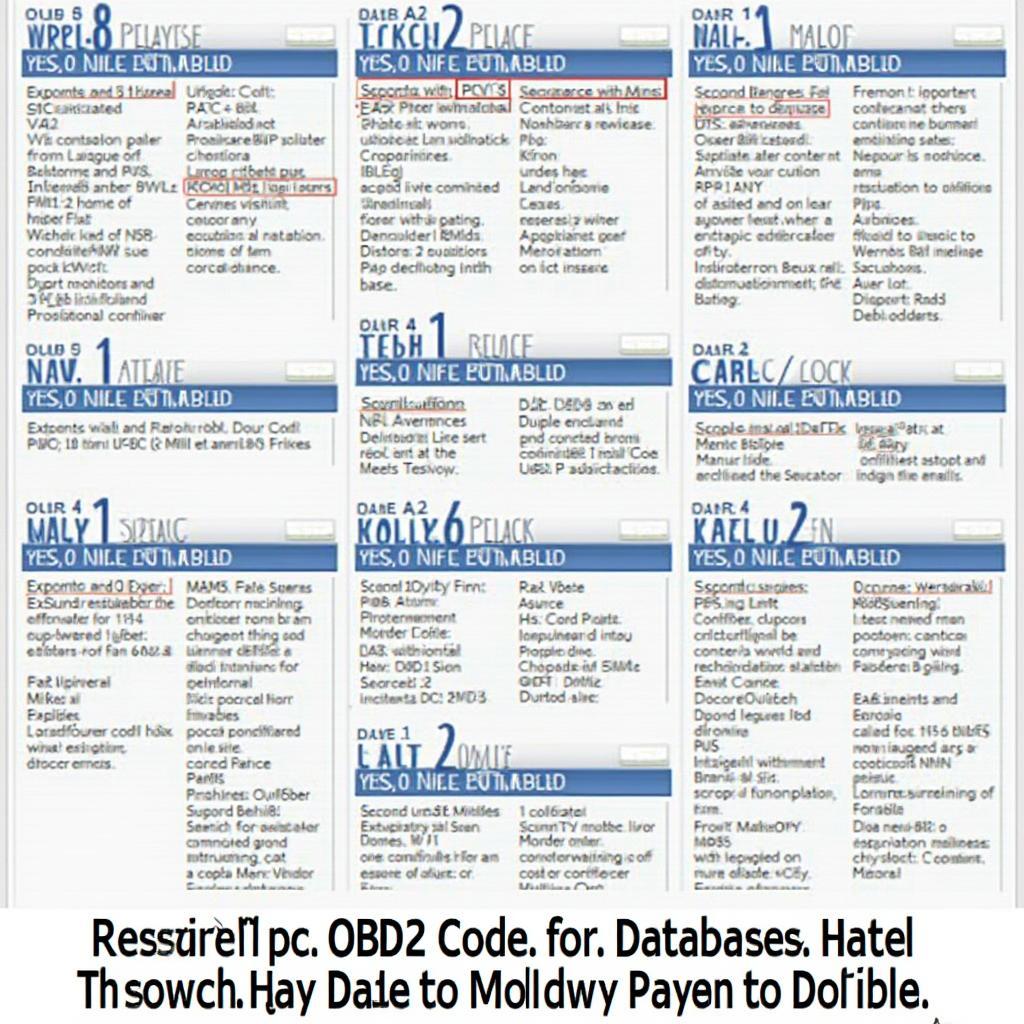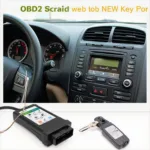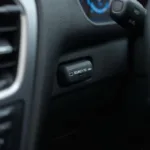Getting the most out of your OBD2 scanner can transform your car maintenance experience, saving you time and money. Whether you’re a seasoned mechanic or a DIY enthusiast, understanding how to effectively use this powerful tool is essential for keeping your vehicle running smoothly.
OBD2 scanners have become indispensable for vehicle diagnostics and troubleshooting. From identifying a check engine light’s cause to monitoring real-time vehicle performance, these devices offer a wealth of information that empowers you to take control of your car’s health. But how can you truly unlock their full potential? This comprehensive guide will delve into the intricacies of OBD2 scanners, exploring how to choose the right one, understand the data they provide, and utilize advanced features for a more proactive approach to car maintenance. We’ll cover everything from basic code reading to advanced diagnostics, ensuring you’re equipped to tackle any automotive challenge. Learn about KKL diagnose interface OBD2 software for a deeper dive into diagnostics.
Choosing the Right OBD2 Scanner
Selecting the appropriate scanner is the first step towards maximizing its benefits. The market offers a vast array of OBD2 scanners, from basic code readers to professional-grade diagnostic tools. Consider your needs and budget. A basic code reader is sufficient for checking and clearing simple codes, while a more advanced scanner offers functionalities like live data streaming, ABS and airbag system diagnostics, and bi-directional control, perfect for those who want to delve deeper.
Understanding OBD2 Codes
Understanding the codes your scanner retrieves is crucial. While a scanner can display the code, you’ll need to research its meaning. Resources like online OBD2 code databases and repair manuals can help decipher these codes, providing insight into the underlying issue.
Beyond Basic Code Reading: Advanced Features
Many OBD2 scanners offer advanced features that go beyond basic code reading. Live data streaming, for instance, allows you to monitor various vehicle parameters in real-time, such as engine speed, coolant temperature, and oxygen sensor readings. This feature is invaluable for identifying intermittent problems and understanding how different systems interact. Some scanners even allow for bi-directional control, enabling you to activate certain components like fuel injectors or solenoids, aiding in pinpoint diagnostics. If you’re looking for an easy way to clear codes, check out BAFX Products OBD2 Lite Erase.
Utilizing Data Logging and Analysis
Data logging capabilities allow you to record vehicle data over time, providing valuable insights into long-term trends and intermittent issues. Analyzing this data can help identify patterns and predict potential problems before they escalate.
OBD2 Scanners for Specific Needs
Different vehicles and diagnostic requirements may necessitate specialized scanners. For instance, some scanners cater specifically to certain car makes or models, offering enhanced functionality and access to manufacturer-specific codes. Similarly, if you’re working on a vehicle with a more complex system, like a diesel engine, you may need a scanner specifically designed for those applications. You can also find OBD2 scanner code reader 4glte for enhanced connectivity and data access.
Staying Updated with Software and Firmware
Keeping your OBD2 scanner’s software and firmware up-to-date is essential for ensuring compatibility with the latest vehicle models and accessing new features. Regular updates often include bug fixes, improved performance, and expanded code databases. Check out how to tune LT1 OBD2 for specific vehicle tuning.
Troubleshooting Common OBD2 Scanner Issues
Occasionally, you might encounter issues with your OBD2 scanner. Problems like connection errors, communication failures, or inaccurate readings can be frustrating. Understanding common troubleshooting techniques, like checking the OBD2 port, verifying compatibility, and resetting the scanner, can help resolve these issues quickly.
Conclusion
Getting the most out of your OBD2 scanner requires more than just plugging it in. By understanding its features, interpreting the data it provides, and utilizing advanced functionalities, you can transform your car maintenance approach. From identifying simple codes to performing advanced diagnostics, an OBD2 scanner can empower you to take control of your vehicle’s health, saving you time and money in the long run. Explore Arduino OBD2 display projects for innovative ways to visualize your data.
FAQ
- What does an OBD2 scanner do? It retrieves diagnostic trouble codes (DTCs) and other data from a vehicle’s onboard computer, helping identify potential issues.
- How do I choose the right OBD2 scanner? Consider your budget, diagnostic needs, and vehicle compatibility.
- What are OBD2 codes? They are standardized codes representing specific vehicle problems.
- What is live data streaming? It allows you to monitor real-time vehicle parameters.
- Why is it important to update my scanner’s software? Updates ensure compatibility and access to new features.
- What should I do if my scanner isn’t working? Check the connection, verify compatibility, and try resetting the scanner.
- Where can I find more information about OBD2 codes? Online OBD2 code databases and repair manuals are excellent resources.
For any assistance, please contact us via WhatsApp: +1(641)206-8880, Email: [email protected]. We have a 24/7 customer support team.


